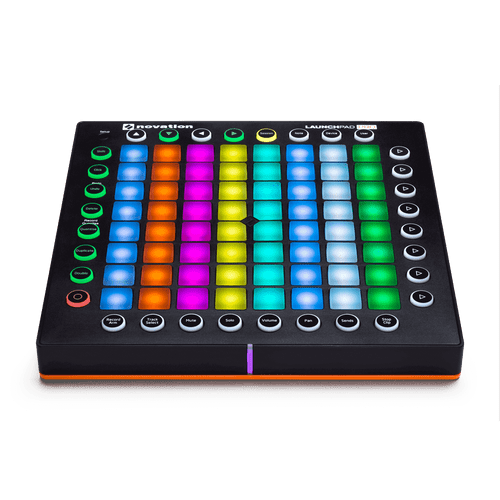Description
Enhance your performance
Launchpad Pro is the best and simplest performance grid instrument for Ableton Live. It integrates seamlessly and simplifies the challenge of performing live in Ableton, by giving you hands-on control of your clips and tracks with four simple modes: Session, Note, Device and User. You don't need to set anything up; simply plug in and starting playing your music - everything will just work
Control just about anything
Whichever software you're using, Launchpad Pro lets you control it and any piece of external hardware. Plug it straight into Logic Pro and play it like a keyboard, or connect the MIDI ports to Bass Station II and play riffs on your grid. Immediately play your clips — the 8x8 grid of RGB pads light up to match the colour of your clips in Ableton, so you can concentrate on triggering and combining your loops and ideas.
Scale Mode
The pads automatically assign themselves to the notes of one of 32 keys and modes, making it impossible to play out of key.Make dynamic beats: drum racks are automatically laid out and illuminated, which makes it as easy as possible to create expressive beats and drum performances using the velocity and pressure-sensitive pads.
Play it like an instrument
You can easily play notes, scales and chords on the grid, because Launchpad Pro illuminates its pads in melodic layouts. You'll get RGB LED feedback every time you press a pad and, if you're in Standalone Mode, you can use the grid to play any of your software and external hardware, too.
Mix without losing focus
Get slick, immediate access to all your mixer controls mid-performance, so you stay in your flow. There's no need to enter a separate mixer mode; press and hold a mixer function button (like mute or volume), make a change, and then simply release the button to drop straight back into your performance.
Easily control your effects
Control any Ableton effect or instrument mid-performance to add engaging, expressive effects like reverb, beat repeats and filters. The button grid turns into eight velocity-sensitive vertical faders, with LED feedback for super smooth effect transitions.
Build your own creations
Max for Live lets you use your Launchpad Pro however you like: turn it into a step sequencer, trigger videos from drum pads or use it to create just about anything you can imagine. Alternatively, engage with the whole community of Max for Live creators to find limitless inspiration and downloads.
Sleek, lightweight and modular
This grid is built for performing. It's compact and light enough to throw in your bag, yet tough enough to survive the roughest gigs. You can bus-power it via USB, or use the included power supply to take full advantage of the super bright RGB LEDs during dusk performances. Like all Launch products, you can chain it to multiple Launchpads and connect it to the rest of your studio or live setup.
Key Features
- Make music immediately — It's class compliant and doesn't need any drivers: you just install the software, plug it in and start performing.
- Included software —Includes Ableton Live Lite, one of four XLN Audio Addictive Keys instruments and over 4GB of Loopmasters samples
- Enjoy three years of warranty — Rely on our three-year warranty if any Novation hardware needs repairing or replacing due to a manufacturing fault.
- Practice rhythm — Use Melodics to hone your pad drumming skills for free.
- Get started with Launchpad in seconds — Launchpad Arcade is a place where you can get straight into making music with Launchpad's familiar clip-based user interface.






